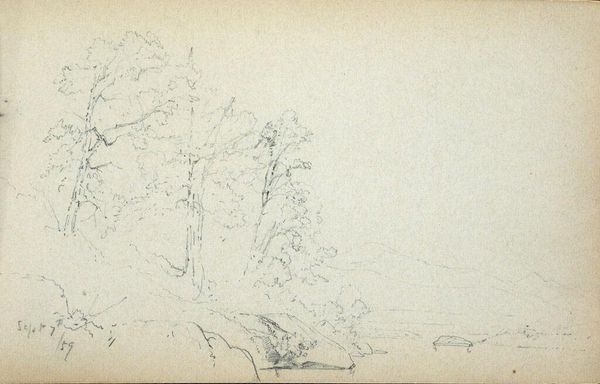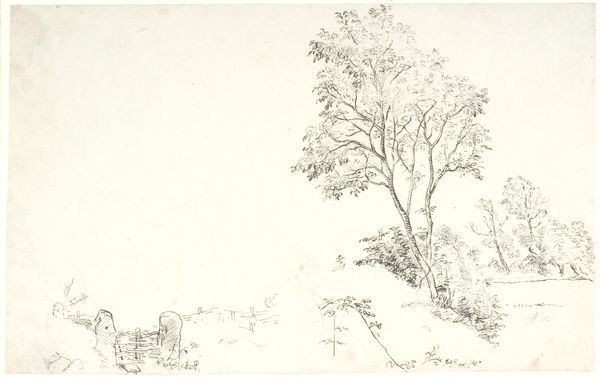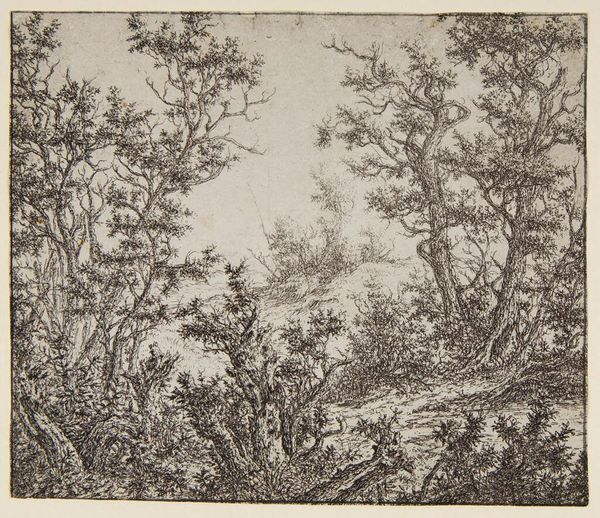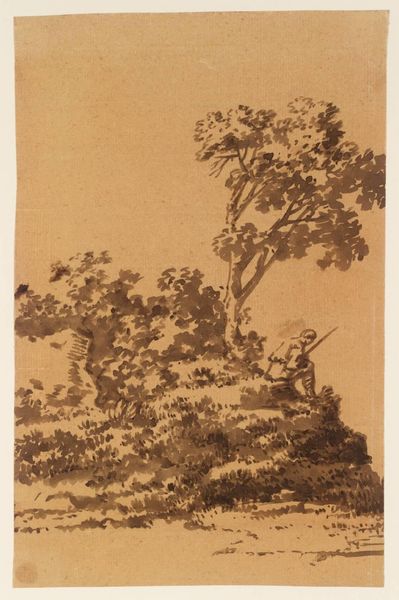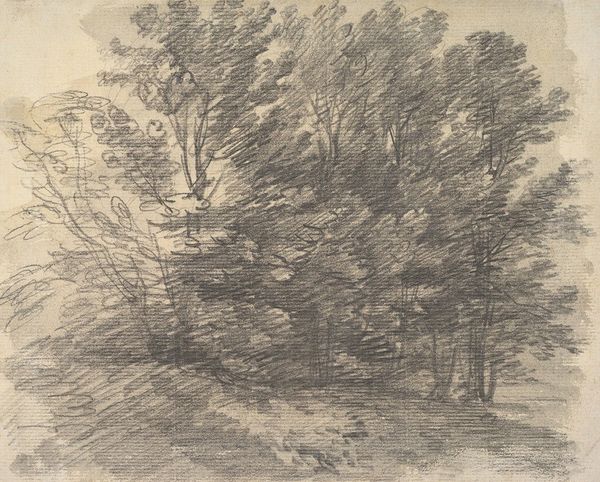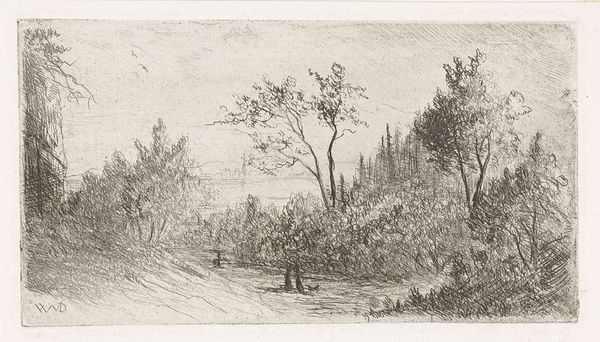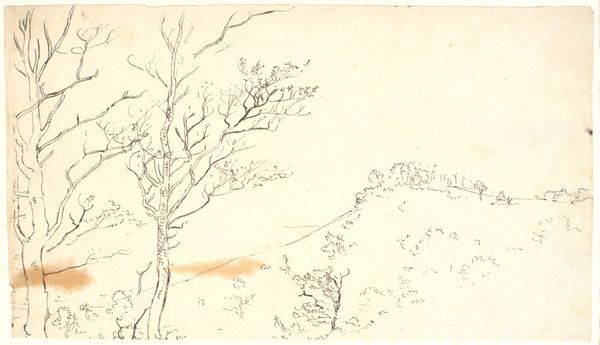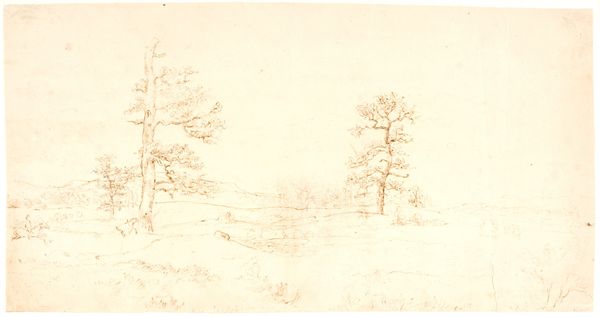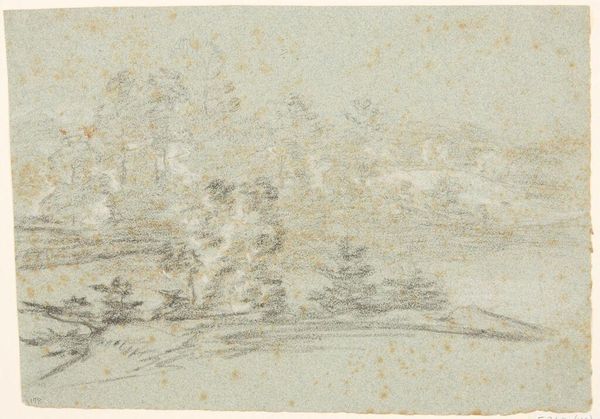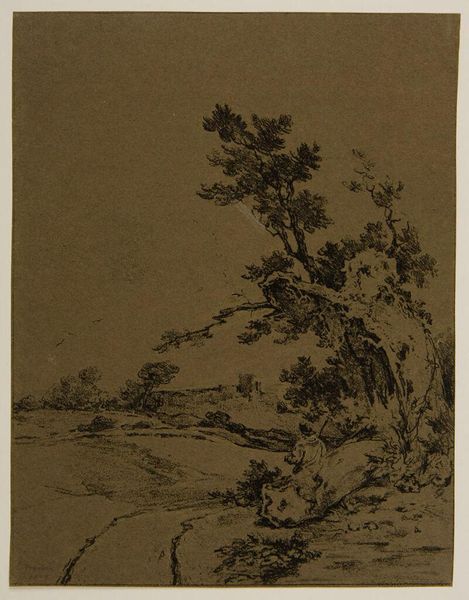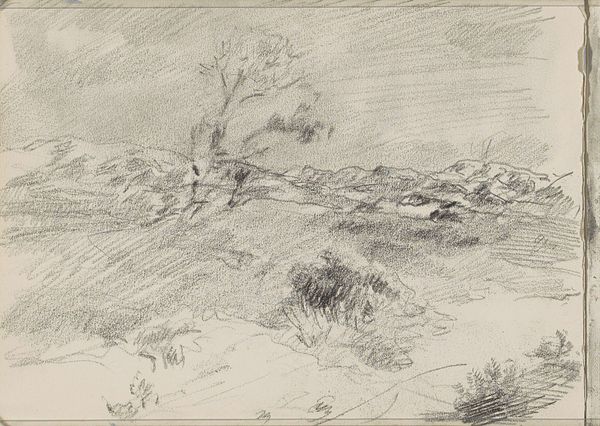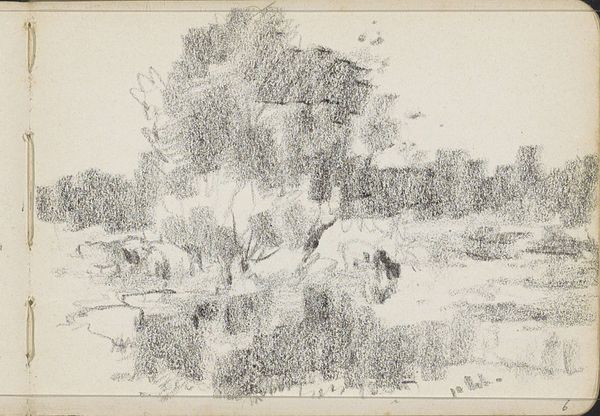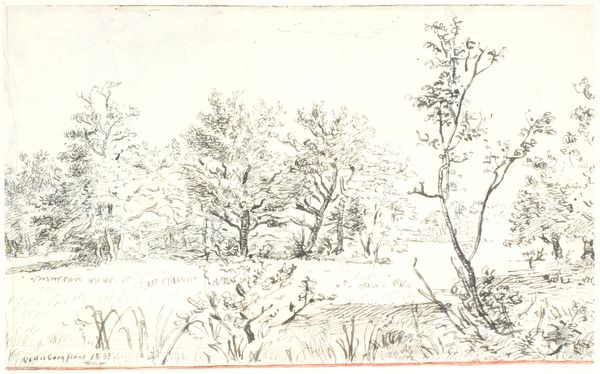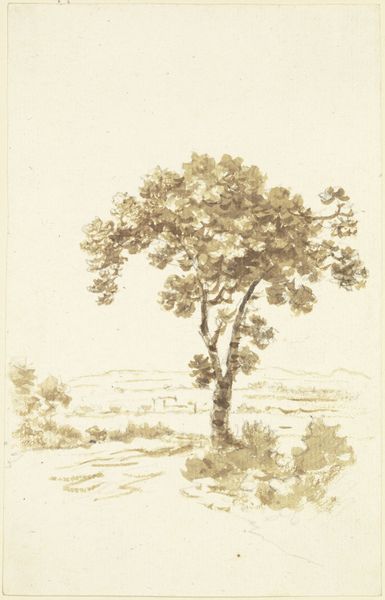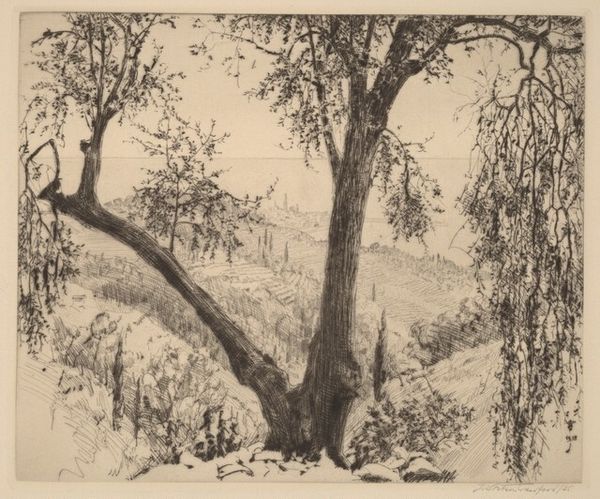
drawing, paper, pencil, graphite
#
drawing
#
impressionism
#
landscape
#
paper
#
geometric
#
pencil
#
line
#
graphite
#
northern-renaissance
#
post-impressionism
#
naturalism
Copyright: Public domain
Curator: Looking at this image, I'm struck by its seeming simplicity and the immediate feeling of stillness, like holding one's breath in the face of nature. Editor: Indeed. What we’re viewing here is Vincent van Gogh's “Hill with Bushes,” created in 1888. He employed graphite and pencil on paper. It's held at the Van Gogh Museum in Amsterdam. A landscape of deceptively bare trees populates a hillside. Curator: The linear quality of the piece almost suggests a woodcut or even an older, Northern Renaissance approach. And it really stands in contrast to his vivid, almost manic, oil paintings. You can still sense the frantic energy trying to take hold here through the short deliberate, overlapping strokes. Editor: This drawing encapsulates a period when Van Gogh was experimenting heavily, influenced both by Impressionism and his own growing exploration of subjective expression, particularly regarding nature. He saw nature not as mere scenery, but as a mirror to the soul. How do you see that reflection playing out? Curator: I'd say there's a vulnerability here, a rawness laid bare, absent the colour that can sometimes veil such intense feeling. The bare branches almost have a sense of pleading. It's like seeing Van Gogh himself, stripped of the bravado he might sometimes wear, revealing a more introspective state of mind. The hill, with its scrubby bushes, becomes a symbol of resilience in hardship. Editor: Certainly. And it's important to remember the social context. Van Gogh often felt alienated, on the margins, and the way he depicted nature became, I believe, a subtle form of social commentary. The unyielding nature of that arid landscape subtly critiqued society's harsh treatment of outsiders. His imagery serves almost as a silent political protest. Curator: And here he really uses visual economy to do that, doesn’t he? Each line carries weight, adding emotional depth that exceeds the simplicity of the material. Looking closer I can perceive a certain geometry at play too which wasn’t something I immediately noticed! Editor: It is quite a compact landscape overall! Well, considering the period of art production and his unique use of pencil on paper, it becomes very evident why he left an imprint that inspires viewers, artists, and cultural institutions like this museum alike, even today. Curator: Indeed. It’s moments like this when one sees the bare, almost brutally honest, lines on paper that the symbols that truly move one remain grounded in their ability to convey universal feelings of loneliness, strength and perhaps… most beautifully, longing.
Comments
No comments
Be the first to comment and join the conversation on the ultimate creative platform.
